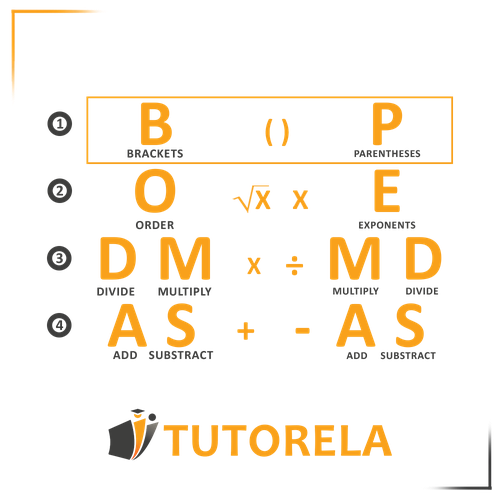In previous articles, we have seen what is the order of operations for addition, subtraction, multiplication, and division and also the order we must follow when there are exponents.
When the exercise we need to solve includes parentheses, we always (always!) start with the operation contained within them.
Reminder: when an exercise presents operations that have the same precedence, that is, multiplications and divisions or additions and subtractions, we will solve the exercise from left to right.
